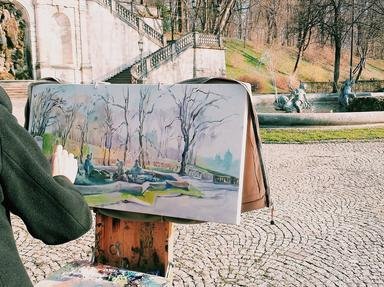Quiz Answer Key and Fun Facts
1. Which painter was a member of the Skagen Painters group?
2. Which artist was a member of the Bloomsbury Group?
3. Which artist was a friend of Edgar Degas and one of the most noted US artists?
4. Which artist, who has been credited with the invention of the polka-dot, and the use of zig-zags in fashion, was a founding member of the Orphism movement in art?
5. Who was the mathematically inspired artist who created such works of genius as "Relativity"?
6. Who painted the Renaissance work "The Flagellation"?
7. Who painted 'Susanna and the Elders'(1610)?
8. Who painted 'Nighthawks' in1942?
9. Which of these artists was a leading painter in the style of the Barbizon school?
10. Who painted 'The Precious Book'(1916-1926)?
Source: Author
mnbates
This quiz was reviewed by FunTrivia editor
Bruyere before going online.
Any errors found in FunTrivia content are routinely corrected through our feedback system.
